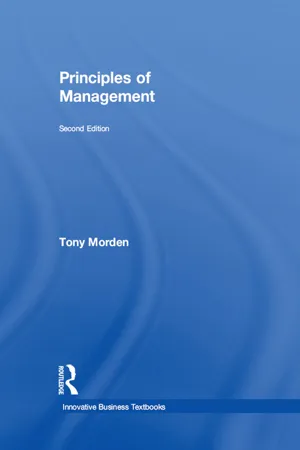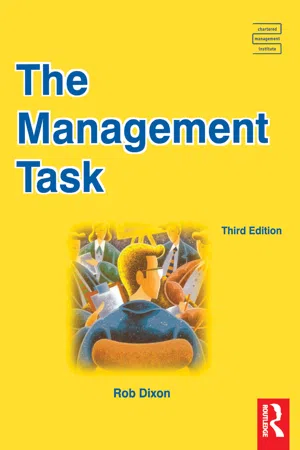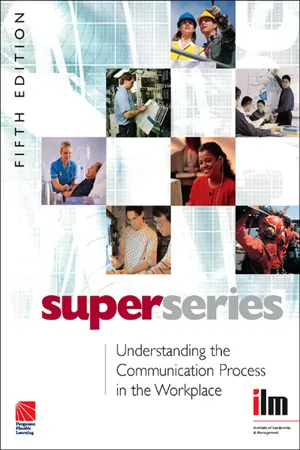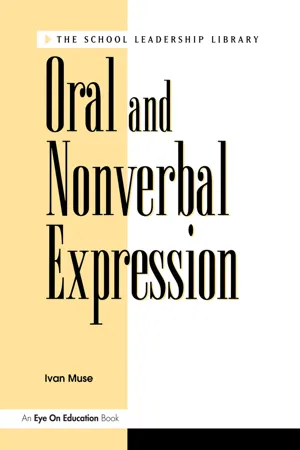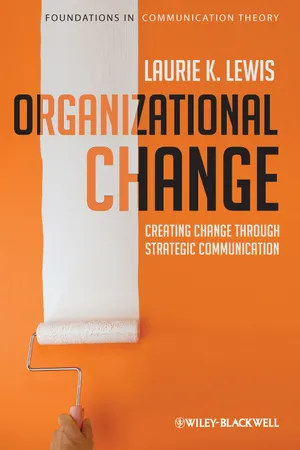Business
Communication Process
The communication process involves the exchange of information between individuals or groups within an organization. It includes the sender, message, channel, receiver, and feedback. Effective communication is essential for conveying ideas, making decisions, and building relationships within a business. Understanding the communication process helps organizations improve internal and external communication strategies.
Written by Perlego with AI-assistance
Related key terms
Related key terms
1 of 4
Related key terms
1 of 3
10 Key excerpts on "Communication Process"
- eBook - ePub
- Tony Morden(Author)
- 2017(Publication Date)
- Routledge(Publisher)
The Communication Process is originated by the sender, who must choose between verbal, written, visual, or representational methods by which to convey his or her message. This message is passed through a communication channel or “medium” to a receiver, who may understand the message if the Communication Process has operated effectively. The basic objective of the Communication Process is to create understanding on the part of the receiver. Figure 6.3 A Communication Process Model Barriers to Communication The smooth flow of information through the Communication Process described above may be subject to the effects of “barriers to communication”. These barriers may interfere with the Communication Process, and reduce its effectiveness. Barriers to communication may be categorized as follows: Message related - communication effectiveness may depend upon message content, message format, and message clarity. Failure to express and formulate the message in an appropriate manner may reduce its chances of effective communication. Worse, the more that the message contains subjective opinion or qualitative inference, the more controversial (or unacceptable) it may be and the more problematic may be its reception. Personal capacity - which will determine individual ability to express, interpret, or understand the meaning of messages. This personal capacity will depend on linguistic and semantic factors, and upon the level of individual command of communication skills - eBook - ePub
Human Communication Theory and Research
Concepts, Contexts, and Challenges
- Robert L. Heath, Jennings Bryant(Authors)
- 2013(Publication Date)
- Routledge(Publisher)
To examine the anatomy of the Communication Process, this chapter reviews several definitions, thinks of communication as a process, examines early models of the process, and discusses components of the process. We devote the last section in this chapter to a summary of key themes that drive the study of communication in all of its contexts. This discussion is designed to challenge you to refine your definition of communication and to decide which concepts best explain the Communication Process.Communication—A Hard Term to DefineWhat is communication? Hundreds of definitions have been proposed over the past 50 years, but none is entirely satisfactory. A good definition accurately and completely features the key concepts and it points to the relationship between them. For this reason, one definition can be better than another because it more accurately and completely captures the essence of the phenomenon being considered. Think about that as you dissect the definitions that follow.The following examples show the variety of definitions that have been offered. Before studying these examples, jot down your definition of communication and compare it against them. What concepts does your definition feature? Can your definition explain what happens in the four dominant contexts: interpersonal, group, organizational, mass-mediated communication?Featuring what is called a transmission paradigm, Devito (1986) said that communication is “the process or act of transmitting a message from a sender to a receiver, through a channel and with the interference of noise; the actual message or messages sent and received; the study of the processes involved in the sending and receiving of messages” (p. 61). This view of communication has been very popular but offers a limited view. For a moment, consider what is implied by a transmission approach to communication. It assumes that a source or sender creates a message that contains information and transmits that message to the receiver. This view postulates that communication works properly when the message received is the same as the message sent. This linear transmission view of communication assumes that the source “injects” information and other influence into the receiver’s mind. Viewed this way, a message is a “lump” of meaning—like a bullet—that transports and inserts an idea into the receiver’s brain. - eBook - ePub
- Rob Dixon(Author)
- 2007(Publication Date)
- Routledge(Publisher)
These processes are concerned with acquiring resources, developing them, and transferring finished goods and services to the customers. These all involve work teams and reporting relationships, and unless decisions are conveyed to and from the appropriate people, none of the organization’s tasks can be accomplished. 3 Influencing. Communicating is all about persuading, informing, and educating. Therefore, its effect is to mould opinions. 4 Activating. Another purpose of communicating is to initiate action. Communication, in effect, acts as the regulating mechanism for beginning, continuing, and halting the company’s business. The Communication Cycle In order to use the resources at its disposal properly and effectively, management must carefully develop and maintain an adequate communication system. Certainly, one of the most basic skills that any management group must have is the ability to communicate. The communication cycle (Figure 8.2) consists of five stages. All of these stages have to be completed for the process to be said to be a success: 1 Perceive. The Communication Process is centred around perception. This involves an individual assigning meaning to the signals he receives from the environment. The initiator of a message has received certain signals from the environment that he perceives as requiring attention. The purpose in communicating is to transmit information about initial perceptions to a second person. Therefore, the initiator must define clearly what he wishes to convey. If he is successful in structuring thoughts, the recipient of the message should in turn perceive the need for action - eBook - ePub
- Henry Kyambalesa(Author)
- 2019(Publication Date)
- Routledge(Publisher)
2/ BUSINESS COMMUNICATIONPoor ... [communication] turns first impression into lasting bad impression .21Good communication skills are an indispensable factor in the success of any given manager - and of any individual whose work requires him or her to have regular interactions with people, as a matter of fact. But like any other element or factor in the manager’s arsenal of aptitudes, the communication skill is not an in-born quality or attribute; it can be developed only through learning. But, as alluded to earlier in the previous chapter, one cannot acquire any of the essential managerial skills entirely from books, lectures, seminars, and workshops;22 many aspects of managerial competence are learnt best in practice.Let us now proceed to enhance our grasp of business communication by exploring the following: the nature of communication, the Communication Process, communication effectiveness, internal communication, and external communication.2.1/ WHAT IS COMMUNICATION ?Essentially, the term “communication” is used to refer to the process by which meaning and understanding are transacted between a given source (a person, a group of persons, an organisation, or a government agency) and a particular receiver (a person, a group of persons, an organisation, or a government agency). As portrayed in Figure 2.1 , it implies an exchange or a sharing of meaning and understanding between or among any given parties.Good communication makes things happen in organisational settings; without it, work can stall because nobody can know what to do, let alone the procedures to follow in executing work assignments. It is through communication that any given organisational member can get to know about his or her responsibilities, authority, and accountabilities, as well as the various procedures, methods, and rules of the workplace. To any given organisation, therefore, communication is, to an organisation, what the nervous system is to the human body. - eBook - ePub
- Elearn(Author)
- 2009(Publication Date)
- Routledge(Publisher)
Communication in organisations is full of contradictions. On the one hand, everyone agrees that it is vitally important – the lifeblood of the organisation. As early as 1916, Henri Fayol, the French engineer, put communication at the centre of his ‘wheel of management activities’. Ask any group of employees what matters most to them and you will almost certainly find ‘good communication’ high on the list.On the other hand, communication is one of the things that organisations most often get wrong. Charles Handy, in Understanding Organisations (1993), gives a list of studies showing how often communication fails to get through. Here are just two examples:Communication isone of the things thatorganisations mostoften get wrong. A study of communication in companies found that information communicated by top management was only remembered by one in five people on the shop floor- In another case study, while 95 per cent of supervisors felt they understood the problems of the people in their teams well, just 35 per cent of their team members agreed.
In their book Understanding Information (1990), Jonathon Liebenau and James Backhouse define communication as follows:Communication is a process which involves at least two parties. This process can be characterised as a set of activities involving a sender with intentions to convey, a medium or channel for carrying signals, and a receiver who has the ability to interpret those signals.Source: Liebenau and Backhouse (1990)Within this broad definition it is important to distinguish between:- spoken and written communication
- verbal and non-verbal communication
- formal and informal communication.
Spoken and written communication
The first key distinction is between spoken communication – where we speak and listen – and written communication – where we write and read. As Stephen Covey comments, managers spend many hours a day speaking, listening, reading and writing:The ability to do them well is absolutely critical to your effectiveness.Source: Covey (1992)Covey highlights the skills of listening as especially important. He points out that we all spend a lot of time at school learning to read, write and speak, but much less learning to listen and in practice it is listening skills that can be especially important to managers. - Institute of Leadership & Mana(Author)
- 2013(Publication Date)
- Routledge(Publisher)
I expect that you have dealt with plenty of processes in your time as a first line manager. A process is anything that can be broken down into: INPUTS → PROCESS/TRANSFORMATION → OUTPUTS There is then feedback from the process and the outputs which affect the next set of inputs. Communication is a process like any other, except that the input is information. We call it the communication cycle, because you can enter it at any point. And there are certain stages to that communication itself: SENDER → ENCODING → TRANSMISSION → DECODING → RECEIVER First of all, let’s look at the inputs which the sender receives.
What you put in depends on where you work.3.1
Inputs to the Communication Process
If you work for an insurance company, there may be enquiries about insurance rates for cars or houses.An accounts department will receive various documents (invoices, credit notes, etc.).A trade union office will get complaints about working conditions or rates of pay or likely sources of friction with management.Activity 4
What you listed will depend on where you work. I had a look in my various in-trays and found:List the top four regular inputs of information that arrive at your workstation. Include information received through any of the communication media you use, but exclude junk mail requiring no action.1 ___________________________________________ 2 ___________________________________________ 3 ___________________________________________ 4 ___________________________________________- eBook - ePub
- Ivan Muse(Author)
- 2013(Publication Date)
- Routledge(Publisher)
2THE PROCESS OF COMMUNICATIONThere is one thing worse than not communicating: it is thinking that you have communicated when you have not.—Edgar DaleSchools are literally a beehive of activity and constant noise. In place of the hum of machinery in the large factory, the noise of schools is that of interaction. Teaching and learning involves talking and listening. The Communication Process, as most people are aware, is simply that of individuals sending and receiving messages in order to be understood. Communication is simple to describe or illustrate, but very difficult to implement in a satisfying and effective manner with any degree of regularity and clarity (Daresh and Playko, 1995).DID YOU HEAR WHAT I SAID ?The simple act of communication, as observed in Figure 2.1 , involves a sender (for the purpose of this discussion, the principal) giving an oral message, to a receiver (who could be a teacher, secretary, student, etc.).FIGURE 2.1The expectation is that the listener will accept the message as it was accurately given and respond as the sender expects. But, as most people are aware, communication is really more complex than simple. The difficulty with accuracy is getting messages across to others, especially in an organizational setting where interaction is vitally important to effectiveness and productivity, is that more than verbal exchanges are involved.When a message is given, complex interaction between the sender and receiver is at play. Personality factors, such as participant intellect, emotional and physical well-being, feelings and attitudes, interests, role responsibilities and motivation, to name a few, color or distort messages. For example, take this dialogue between a mother and her five year old daughter. The mother is busily preparing the evening dinner and checking the progress of her daughter who is picking up toys left in the playroom. In another room, baby Robert is crying, wanting to be picked up and nurtured after taking a nap. The mother, with her arms covered with flour and bread dough cannot immediately respond to the baby’s needs. She remarks in an exasperated manner, speaking out loud to herself, “That baby is spoiled rotten! He could lie there quietly for a few minutes without fussing—what he needs is a good spanking!” - eBook - ePub
Speaking Professionally
Influence, Power and Responsibility at the Podium
- Alan Jay Zaremba(Author)
- 2014(Publication Date)
- Routledge(Publisher)
Let us distill these and other similar definitions in order to construct a description of communication that is useful for our purposes. Below are three related statements about communication. Taken collectively, they define the concept. Following the bulleted list is a description of each of the key phrases in the defining statements:• Communication is an audience-centered and nonlinear process.• It occurs when a receiver perceives meaning from verbal and nonverbal symbols that areintentionally or unintentionally transmitted by a source.• It is not synonymous with understanding.COMMUNICATION IS AN AUDIENCE -CENTERED PHENOMENON
Hopper has written that “communication can be said to have taken place only when messages are received and interpreted.”7 Similarly, McCroskey states that communication is “the process of one person stimulating meaning in the mind of another by means of a message.”8 In more technical terms, Stevens writes that communication requires “the discriminatory response of an organism to a stimulus … If the stimulus is ignored by the organism, there has been no communication. The test is differential reaction of some sort.”9In common language these three quotes mean simply: You have not communicated by virtue of sending a message. You have communicated only when someone has received the message. When you prepare for your presentations, keep that defining characteristic of communication front and center on your radar screen.If you have delivered a brilliant speech and your listeners could not understand it, you have communicated to them only that your presentation was unclear. You have not communicated what you intended to send. Even if you distribute a text version of your presentation, you have not necessarily communicated any of the sentiments contained therein.The late Arnold “Red” Auerbach is the author of several books, including MBA: Management by Auerbach . He is better known for his remarkable achievements as coach, general manager, and president of the Boston Celtics. His perspective on the subject of communication reflects his awareness of taking an audience-centered approach. “When it came to communications,” he wrote, “my rule of thumb was very simple: It’s not what you tell them, [it’s] what they hear.”10 More academic sorts have put it this way: “the eloquence of a speaker’s words are irrelevant if the words are not understood or do not affect the people in the audience.”11 - eBook - ePub
Decisions
An Engineering and Management Perspective
- Gerard H. Gaynor(Author)
- 2015(Publication Date)
- Wiley-IEEE Press(Publisher)
Decisions have considered who makes decisions, why they are made, how they are made, and how those decisions are communicated to those with the responsibility for implementation. The theoretical framework for communicating decisions does not exist. Perhaps the context in which decisions are made limits the opportunity for a sound theoretical base that operates in all situations. By theoretical framework, I mean like theoretical in physics F = M × A (Force = Mass × Acceleration) kind of definitiveness. The research in communication does not provide guidance for the practitioner manager and engineer.Communication can be defined in many different ways. A composite dictionary definition would consider communication as a process by which information is exchanged between individuals through a common system of symbols, signs, or behaviors. The means can be oral, written, and visual, those means that may arise in the future, and through any available media. But communication involves more than an exchange of information; it also involves an understanding of what is being communicated: without understanding the essence of the communication, information has not been communicated. That seems obvious, but unfortunately, we falsely assume that our communications are understood. You only need to reflect on your personal experiences, where the communication and the interpretation were not aligned by the sender and the receiver, both may have totally different interpretations. Our discussion focuses on communication in making decisions.Communications from the executive suites often arise in executese language. As an example; we're all familiar with how organizational strategic plans, various strategic directions, and strategies are communicated from the executive suites. Those communications provide little if any guidance for engineers and other discipline specialists. Stating that the organization will gain “x - eBook - ePub
Organizational Change
Creating Change Through Strategic Communication
- Laurie Lewis(Author)
- 2011(Publication Date)
- Wiley-Blackwell(Publisher)
The needs for physical space, equipment, and personnel may not be effectively interjected into decision-making in preparation for change. Leadership may not be visible if high-level decision-makers are not willing to publicly state support for change. In all of these cases, communication might be blamed for poor outcomes. However, in all of these cases other issues – political, physical resources, planning, leadership – may be as much or more to blame. Scapegoating communication as the problem of change is one faulty outcome of overstating the role of communication in change. A related problem is assuming that if communication has entirely positive qualities in a change effort, none of the other problems will matter. Communication, even if exceptionally good as judged by all stakeholders, cannot necessarily overcome lack of resources, commitment, financial resources, or competition of other processes and distractions, or a poorly designed, dysfunctional, or ill-fitting change. With this cautionary note in mind, let us move on to consider key Communication Processes during implementation of change. Communication Processes Processes are sets of actions designed and directed towards some desired outcome. Communication Processes involve interaction, discourse, and interpretation. Processes are sometimes created formally by decision-makers in organizations. At other times processes are created in emergent interaction that may become normative (usual) practice over time. Discussions of Communication Processes in the context of change are often limited to the actions and plans designed by implementers to afford smooth introduction of changes and increase the likelihood of desired results for implementers and the organizations that employ them. Here, we will consider Communication Processes in a broader sense as enacted by many different stakeholders for a variety of purposes that may or may not align with those of implementers
Index pages curate the most relevant extracts from our library of academic textbooks. They’ve been created using an in-house natural language model (NLM), each adding context and meaning to key research topics.
Explore more topic indexes
Explore more topic indexes
1 of 6
Explore more topic indexes
1 of 4
